Edie Melson's Blog, page 19
April 5, 2025
Spiritual Practices for Writers: The Practice of Waiting
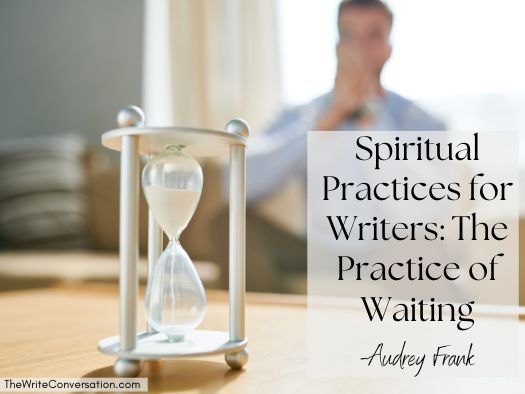
by Audrey Frank @AudreyCFrank
Join me the first Sunday of each month this year as we examine twelve spiritual practices for writers. Links for each successive month are found at the end of the post.
Patiently wait for God alone, my soul! For he is the one who gives me hope (Psalm 62:5, NET).
We writers do a lot of waiting.
We are waiting for the words to come. Waiting for acceptance from agents, editors, and publishers. Waiting for our kids to grow up so we’ll have time to write that book. Waiting for the right time and place to finish that unfinished manuscript. Waiting.
After a long period of writer-waiting, I saw three books published within a few months of each other. Then tragedy struck our family, and I found myself by a hospital bed, waiting. The long-awaited books seemed grotesquely unimportant in the struggle between life and death.
In that dark place, a question forever reframed waiting for me.
Is God sovereign, or is He not?
The Cambridge Dictionary defines sovereignty as “having the highest power.” Merriam-Webster adds, “possessed of supreme power, unlimited in extent.”
Does God have higher power than the place in which I find myself now? Is He possessed of supreme power, unlimited in extent, over my hopes and dreams, dashed though they may seem sometimes? Does He have the power to take my words where they need to go, even if something stops me in my well-planned tracks?
Is God sovereign, or is He not?
There is no middle ground. God is either sovereign over everything or nothing. My answer to this question will determine who I wait on.
The practice of waiting on God is a liberation. The Psalmist knew it. Andrew Murray wrote about it. His classic Waiting on God has led many an impatient soul to freedom.
Who are you waiting on today, dear writer?
Practice the choice of waiting on God alone. I wonder how it might transform your care-strewn heart and hesitating pen.
Let me know!Lord, I am always waiting, it seems. Teach me to wait on You alone and to trust Your loving sovereignty over everything in my life. Amen.
TWEETABLESpiritual Practices for Writers: The Practice of Waiting from @AudreyCFrank on @EdieMelson (Click to Tweet)
Don't Miss The Other Spiritual Practices for Writers! JANUARY: THE PRACTICE OF PLANNING FEBRUARY: THE PRACTICE OF TRUSTING MARCH: THE PRACTICE OF HOPING APRIL: THE PRACTICE OF WAITING
 Audrey Frank is an author, speaker, and storyteller. The stories she shares are brave and true. They give voice to those whose words are silenced by shame, the hard things in life that don’t make sense, and the losses that leave us wondering if we will survive. Audrey and her family have spent over twenty years living and working among different cultures and world views, and she has found that God’s story of redemption spans every geography and culture. He is the God of Instead, giving honor instead of shame, gladness instead of mourning, hope instead of despair. Although she has three different degrees in communication and intercultural studies, Audrey’s greatest credential is that she is known and loved by the One who made her.
Audrey Frank is an author, speaker, and storyteller. The stories she shares are brave and true. They give voice to those whose words are silenced by shame, the hard things in life that don’t make sense, and the losses that leave us wondering if we will survive. Audrey and her family have spent over twenty years living and working among different cultures and world views, and she has found that God’s story of redemption spans every geography and culture. He is the God of Instead, giving honor instead of shame, gladness instead of mourning, hope instead of despair. Although she has three different degrees in communication and intercultural studies, Audrey’s greatest credential is that she is known and loved by the One who made her.Audrey is the author of Covered Glory: The Face of Honor and Shame in the Muslim World (Harvest House Publishers), an outpouring of Audrey’s heart to introduce others to the God of Instead. Shame is not unique to the developing world, the plight of the women behind veils, young girls trafficked across borders; shame is lurking in hearts everywhere. Through powerful stories from women around the world, Covered Glory illuminates the power of the Gospel to remove shame, giving honor instead. Available at favorite booksellers: BARNES & NOBLE, BOOKS A MILLION, AMAZON.
Published on April 05, 2025 22:00
April 4, 2025
Two Key Resources for Writers
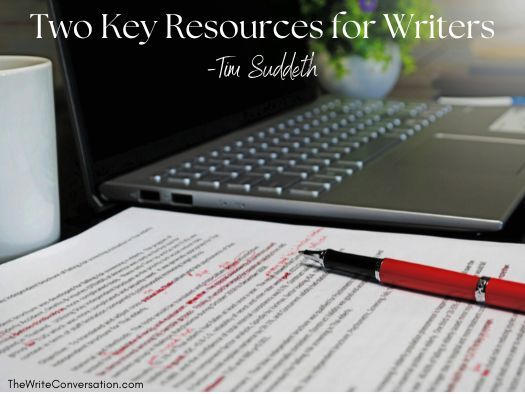
by Tim Suddeth @TimSuddeth
Once you have your novel written, all you need to do is write The End and you’re done, right? I wish. Wouldn’t it be great if that was the case? Unfortunately, that is usually when the real work begins. You have your story on paper (or the screen), now you have to make sure that other readers understand it. Thinking ‘they’ll figure it out’ is not the way to get readers. It’s the writer’s job to make sure the story is clear and to guide the readers through the action.
So how do you do this? Where can you go when you need to polish your story?
Two Resources for Novelists
1. The Chicago Manual of Style
The Chicago Manual of Style (CMOS) is the standard for US style in book publishing. I’ve found that when I use a comma, I often get a line from Microsoft to take it out. When I do, ProWritingAid will give me a line saying to put it back in. (Has that ever happened to you?) How can I know what to do? Call my third grade English Teacher?
That is when you can go to CMOS to find the rules for when to use or not use a comma. (And yes, they recommend using the Oxford comma in a series. And the Grammar nerds go wild.) Grammar, punctuation, spelling, names, and titles of works, numbers, abbreviations, they are all covered.
I’ve heard about the CMOS ever since I started writing and I’ve mentioned it here before. But I must admit, I never opened it up and looked at it. I mean, it’s over 1100 pages without pictures. To say it’s a little intimidating is an understatement.
So, I was surprised, after I opened its pages, by how easy it is to read. You don’t have to be a university professor or spend hours deciphering a section. It’s written in clear English. (American English, that is. England English, of course, has its own style and spellings. We can’t make things that simple.)
The CMOS has been in print since 1906 and it’s in its 18th edition. Traditionally, it comes out about every seven years or so. An editor friend of mine (Yes, editors can be friendly, in spurts.) said she has both the online copy and the hardcover. She uses the online edition so she can use the search engine. And she uses a hardcover edition to underline and bookmark the pages she refers to often.
2. The Chicago Guide to Copyediting Fiction
While all types of writers use the CMOS, it's primary concern is nonfiction. The Chicago Guide to Copyediting Fiction by Amy J. Schneider, is a companion editing guide geared to the needs of fiction writers and copyeditors. It offers advice on how to use dialogue, voice, grammar, and other decisions that are unique to fiction.
In Part I, she looks at the mindset and processes of editing a work of fiction and the various drafts that may be required. Part III looks at editorial issues specific to fiction. And as beneficial as these are, it’s Part II that I really like where she describes building a style sheet for each of your works. (We’ll look at this in more detail next month.)
At writer conferences and in writer groups, after we hear about how much work goes into rewriting, editing, and proofreading a story or book, we often have someone ask, “Is all this work really necessary? Can’t I just hire someone to do all this for me?” (And they really shake their head when they learn that after they think they are done, they still need to hire someone else to go over it.)
I understand. This is a lot to take in. It’s why many, if not most, authors work and study for years before their books are ready to be published. And there are few, if any, shortcuts. You may send your manuscript to an editor before you’ve invested in learning the craft, but then you’re paying the editor to teach you what all writers have to learn.
If they have the time to teach you. Many agents are so swamped that they only take submissions that are 95% ready. They can polish, but they don’t have the time to invest if a lot of reconstructing is required. And editors charge by how much time they think the work will take. They often turn down jobs where they think they can’t help you write a quality book. By learning the craft of writing, you make the editor’s job easier so they can focus on those things that will make your story pop.
And isn’t that what you want? Your name is going to be plastered under the title on the front. You don’t want to spend so much effort and time writing a book that the reader puts down before they get to Chapter Two. You want a book that, when a non-relative reader finishes it, they ask when will you write the next book? Isn’t what we all want to hear about our work?
TWEETABLETwo Key Resources for Writers from @TimSuddeth on @EdieMelson (Click to Tweet)
 Tim Suddeth is a stay-at-home dad and butler for his wonderful, adult son with autism. He has written numerous blogs posts, short stories, and three novels waiting for publication. He is a frequent attendee at writers conferences, including the Blue Ridge Mountain Christian Writers Conference and a member of Word Weavers and ACFW. He lives near Greenville, SC where he shares a house with a bossy Shorky and three too-curious Persians. You can find him on Facebook and Twitter, as well as at www.timingreenville.com and www.openingamystery.com.
Tim Suddeth is a stay-at-home dad and butler for his wonderful, adult son with autism. He has written numerous blogs posts, short stories, and three novels waiting for publication. He is a frequent attendee at writers conferences, including the Blue Ridge Mountain Christian Writers Conference and a member of Word Weavers and ACFW. He lives near Greenville, SC where he shares a house with a bossy Shorky and three too-curious Persians. You can find him on Facebook and Twitter, as well as at www.timingreenville.com and www.openingamystery.com.
Published on April 04, 2025 22:00
April 3, 2025
Timeless Truths that Help Us Keep Writing When the World Around Us Falls Apart
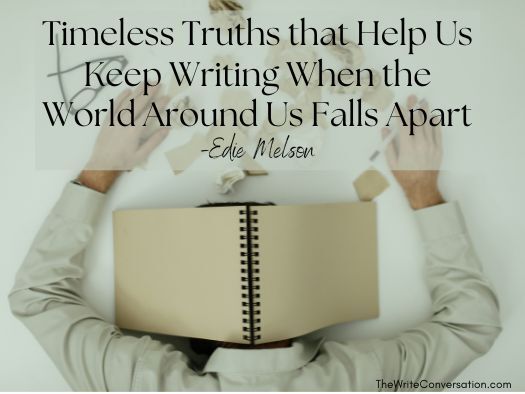
by Edie Melson @EdieMelsonIf world events in the past few years has taught us anything, it’s that life can change in an instant. I thought I knew that, but now it’s something I’m hyper-aware of, and it’s affected the way I do life, writing life and all the rest as well.
But not all the chaos we experience comes from large-scale world events. Sometimes the catastrophe hits closer to home. We may be challenged by a loss of a job, losing a loved one, even a pet's passing can leave us reeling and unable to focus.
Sometimes the chaos is born from good things—moving, new baby or grand baby, wedding—even these positive situations can cause us to be distracted and unfocused.
My default reaction to any kind of upheaval isn't necessarily good or bad—I ascribe to the hunker-down-and-wait mentality. As long as I know that's going to be my reaction, I can anticipate it, recognize it, and work with it.
In those chaotic seasons, I have trouble with creativity—my creative well seems instantly dry. Instead of facing the challenge, I tend to binge TV and play games on my phone. I also overeat, and cram my diet with sugar. This way of coping makes my mind and body sluggish and my mood spirals out of control.
If I'm not careful, I begin to resemble a certain type of heroine whom I despise. One who just waits to be rescued and lets everyone else have fun sword fighting and saving the day.
But years ago—during one of those seasons—God finally got my attention and He whispered some fairly significant truths. Those are what I want to share with you today!
God's Truth about the WorldI never was in control to begin with and this time is a reminder of that fact. For the Lord of hosts has purposed, and who will annul it? His hand is stretched out, and who will turn it back? Isaiah 14:27I was never promised a clear path with predictable outcomes. When you go through deep waters, I will be with you, When you go through rivers of difficulty, you will not drown. When you walk through the fire of oppression, you will not be burned up; the flames will not consume you. Isaiah 43:2I have been given certain gifts, situations, and communities—as well as jobs to do within them. I was never promised a specific set of circumstances with which to follow my calling. For we are his workmanship, created in Christ Jesus for good works, which God prepared beforehand, that we should walk in them. Ephesians 2:10Life is finite and I must make the most of the time I’m given. Yet you do not know what tomorrow will bring. What is your life? For you are a mist that appears for a little time and then vanishes. James 4:14God loves me and He’s never lost control. None of the craziness of life—now or later—can shake Him from the purposes He’s ordained. No, in all these things we are more than conquerors through him who loved us. For I am sure that neither death nor life, nor angels nor rulers, nor things present nor things to come, nor powers, nor height nor depth, nor anything else in all creation, will be able to separate us from the love of God in Christ Jesus our Lord. Romans 8:37-39Yeah.
That last one.
God IS still in control.
I don’t get a free pass from life just because things are difficult and different.
Where to Focus When the World Falls ApartDraw closer to God through prayer, Bible study, worship and praise. But for me it is good to be near God; I have made the Lord God my refuge, that I may tell of all your works. Psalm 73:28Exercise my gift. God has a purpose for the gifts he’s given each of us. And He wants to use our gifts to change the world. But if I’m not using them, He’ll move on and use someone. As each has received a gift, use it to serve one another, as good stewards of God's varied grace: 1 Peter 4:10Love the people God has placed in my path. To me that means more than friends and family, it means I must truly love—the difficult kind of love—those on the news who anger me, the driver who cuts me off, the grocery clerk who’s exhausted and needs a kind word. Above all, keep loving one another earnestly, since love covers a multitude of sins. 1 Peter 4:8Remember that God isn’t finished. And I am certain that God, who began the good work within you, will continue his work until it is finally finished on the day when Christ Jesus returns. Philippians 1:6 So where does this leave me as a writer in difficult times? Exactly the same place I was as a writer in easier times. And that's an important truth I'm just now embracing. My calling and my purpose haven't changed even if the world around me has. It's time to seize the day and be about the business of writing.
What about you? How are moving on with your purpose in spite of the crazy world around us.
TWEETABLETimeless Truths that Help Us Keep Writing When the World Around Us Falls Apart from @EdieMelson (Click to Tweet)
 Edie Melson is a woman of faith with ink-stained fingers observing life through the lens of her camera. No matter whether she’s talking to writers, entrepreneurs, or readers, her first advice is always “Find your voice, live your story.” As an author, blogger, and speaker she’s encouraged and challenged audiences across the country and around the world. Her numerous books reflect her passion to help others develop the strength of their God-given gifts and apply them to their lives. Connect with her on her website, through Facebook, Twitter, and Instagram.
Edie Melson is a woman of faith with ink-stained fingers observing life through the lens of her camera. No matter whether she’s talking to writers, entrepreneurs, or readers, her first advice is always “Find your voice, live your story.” As an author, blogger, and speaker she’s encouraged and challenged audiences across the country and around the world. Her numerous books reflect her passion to help others develop the strength of their God-given gifts and apply them to their lives. Connect with her on her website, through Facebook, Twitter, and Instagram.
Published on April 03, 2025 22:00
April 2, 2025
Writing and Allergy Season: Unexpected Similarities and How to Survive
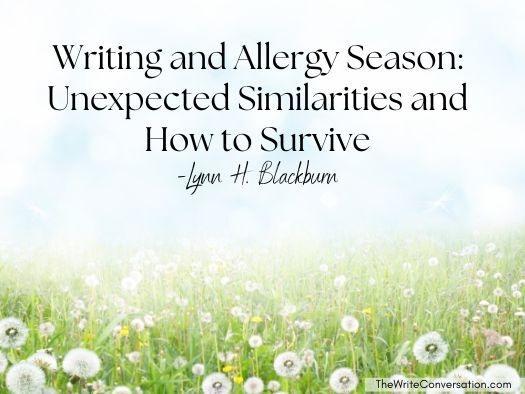
by Lynn H. Blackburn @LynnHBlackburn
Spring in the South is a special kind of blessing—and trial. One day you're admiring the azaleas in full bloom, and the next you're waging war against the yellow dust coating everything you own. You want to go outside, but if you do, all that pollen will be coating your lungs.
It’s simultaneously beautiful and glorious and frustrating and annoying!
Isn’t that also true of our writing lives?
Comparisons between Spring in the South and the Writing Life
The Weather Rollercoaster
On Monday, you’re in shorts and flip-flops, basking in 80-degree sunshine. On Tuesday, you're digging out your winter coat again for a sudden 35-degree morning. Wednesday brings a torrential downpour with a side of humidity that makes your hair look like you stuck your finger in an electrical socket. By Thursday, you're back to tank top weather!
Your story follows the same pattern—one day, your plot feels sunny and clear. The next day, it's a frozen mess. The day after that, it's running too hot and fast.
In the same way smart Southerners know to keep both sweaters and sunscreen handy in April, the wise writer learns to adapt when their manuscripts decide to change seasons without warning.
The Inevitable Yellow Tide
There’s no escaping it. Every Southern writer knows the yellow tide is coming. No amount of preparation can fully protect you. Your car, porch, and even your dog will turn a suspicious shade of yellow-green.
Similarly, no matter how much we plan our novels, unexpected plot issues will find their way into our manuscripts, coating our perfect stories with problems.
But here's the truth—both are signs of growth. Pollen means new life is bursting forth, just as plot problems often lead to deeper, richer stories when we work through them.
Sneezing Fits and Writer's Block
There’s not enough allergy medicine in the world to protect me from sneezing in April. And May. Once upon a time (long, long ago), I sat through final exams at Clemson University with an entire box of tissues that I brought with me to class. It was the worst possible timing, but I had no choice but to sneeze my way through.
Writer's block hits the same way. You're typing along, words flowing like sweet tea at a church picnic, when suddenly—ACHOO!—your mind goes blank. Your characters stand frozen, waiting for you to recover and tell them what to do next.
Both situations require patience, a remedy (antihistamines or prayer, depending on the ailment), and faith that this too shall pass. There will come a time when you can breathe through both nostrils again, and the story will eventually kick back into high gear! (It might take a few weeks…be patient!)
God's Reminder to Slow Down
When spring allergies hit, they force even the most dedicated multitaskers to slow down. You can't rush around when your eyes are watering, and your lungs are clogged.
In the same way, I believe God uses our creative struggles to remind us that writing isn't always about productivity and word count.
Sometimes, it's about sitting still, observing His creation, and listening for the still, small voice that guides our stories. In both cases, we're reminded of our dependence on the Creator, the Author of our faith, who writes our days and creates new beginnings even when we feel buried in yellow dust.
So the next time you're wiping pollen off your laptop or sneezing in the middle of writing a pivotal scene, remember—this too is part of the beautiful, messy process of creating something new.
And like any good Southern story, it'll all make sense in the end.
Grace and peace,Lynn
TWEETABLEWriting and Allergy Season: Unexpected Similarities and How to Survive from @LynnHBlackburn on @EdieMelson (Click to Tweet)
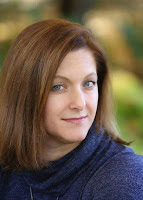 Lynn H. Blackburn is the award-winning author of Unknown Threat, Malicious Intent, and Under Fire, as well as the Dive Team Investigations series. She loves writing swoon-worthy southern suspense because her childhood fantasy was to become a spy, but her grown-up reality is that she's a huge chicken and would have been caught on her first mission. She prefers to live vicariously through her characters by putting them into terrifying situations while she's sitting at home in her pajamas! She lives in Simpsonville, South Carolina, with her true love, Brian, and their three children. Learn more at www.lynnhblackburn.com.
Lynn H. Blackburn is the award-winning author of Unknown Threat, Malicious Intent, and Under Fire, as well as the Dive Team Investigations series. She loves writing swoon-worthy southern suspense because her childhood fantasy was to become a spy, but her grown-up reality is that she's a huge chicken and would have been caught on her first mission. She prefers to live vicariously through her characters by putting them into terrifying situations while she's sitting at home in her pajamas! She lives in Simpsonville, South Carolina, with her true love, Brian, and their three children. Learn more at www.lynnhblackburn.com.
Published on April 02, 2025 22:00
April 1, 2025
Going Deep into Character Descriptions to Connect with Our Readers
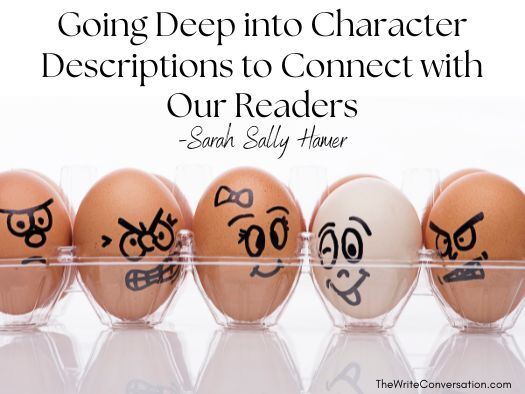
by Sarah Sally Hamer @SarahSallyHamer
Writers are always trying to improve the way we describe our characters. Usually, I suggest my students concentrate on four basic ways for our characters to express: dialog, body language, action, and, if in that character’s point of view, with thoughts. But today I was looking for a specific book on my shelf and came across one that might convince me add another way for characters to express. And it all comes down to what they’re holding in their hand.
The book is Fiction is Folks: How to Create Unforgettable Characters , by Robert Newton Peck. I’d never heard of him when I bought this book, used, about five years ago, but he was well-known for his children’s stories. He brought characters to life, simply by describing ordinary people with ordinary objects any of us might use in our daily lives. For instance, Captain Ahab was a whaler in the mid-1800s. “Let your Captain Ahab hold a harpoon, finger the barb of its point, and balance its shaft.” Things that make Ahab more real. Because, as Peck says, “Characterization is physical.” But it’s not the color of the eyes or hair or even the height of a character that makes the difference, unless you’re trying to force a 6’6” basketball player into a Volkswagen bug. It’s how the character uses and experiences the item that makes all the difference.
Dolly Parton sings a song about a coat her mother made her—the Multicolored Coat—which tells us the story of prejudice, bullying, love, and faith. Funny to think of all of that in one small girl’s garment. The coat is not only the major theme of the story but also the reason for it. Dolly grew up very poor and her mother used the scraps of cloth she had to make a warm coat. To Dolly, it was the most beautiful things she’d ever seen. But to the other children in her school, it was the costume of a clown. Dolly didn’t understand why she was bullied and vilified over something her mother made with love. Ultimately, though, it taught Dolly a lesson about what was really important with her life and became a defining moment for the person she is today. The coat was an important teaching tool for her and for generations to come.
Tools play lots of different roles. They can be nothing more than a ring that a newly widowed woman turns around her finger each time she thinks of her loss, or the stuffed toy my new grandson holds to sleep. It can be a smell of the cologne or a pair of high-heeled shoes that a child recognizes as the signal for Mom to go to work. It certainly can be the pile of books next to my bed or my favorite reading chair. No one who knows me well would recognize either without books next to them. Dolly’s mother, sitting at a sewing machine, put love into every stitch of that coat.
All of these and millions more—one or two for every character—give us the depth our readers demand. They show those readers what a character does and lets us make our own decisions about who they are.
How do we add items to a character in the most effective way? Think about characters you love. Harry Potter always carried his wand. Yes, there are obvious reasons but he always had it, ready to protect himself. We don’t see it all the time, but it was close and ready to use when needed. Can you imagine his character without it? Peck tells us about Jack, a fireman, who is “exhausted, gritty, near frozen from icy water, scorched with flame, hurting from a fallen rafter…yet before his bath and rest, he flattens water from a hose, then refolds that hose with dedication into the rack at the read of his giant red engine.” This shows the reader in great detail the “tools” of his trade, from the physicality of fighting a fire to the perseverance and training of being ready for the next one. Without a word, watching as he works, his purple, stiff, and numb hands slipping on the cold wet hose, we can understand what kind of man he is. Isn’t that better then being told, “He is a good fireman?”
Sit down with your character and “talk.” It’s called a “character interview” but it can become a really deep conversation. Ask questions. Here are a few I recommend:What do you want? (Goal)Why do you want it? (Motivation)Why can’t you have it? (Conflict) These three questions are ALWAYS my first ones.What’s important in your life?What do you do? (as in a job or a hobby or something you love deeply)What tools do you need? What would you do for free?
There are many, many more, of course, but that should get you started. Show us with details, especially of the tools because, “Your reader will decide, without your assistance, what kind of man he is…his beliefs, the devotions of his life that he holds dear.”
Think about your favorite character. What “tools” does that character use? How? Why?
What tools will you give your characters?
(With great thanks to Mr. Peck. I bought my used book of Fiction is Folks for about five dollars, which included shipping and handling. The ones I looked at today were almost ten times that expensive. I wish they’d reprint it. )
TWEETABLEGoing Deep into Character Descriptions to Connect with Our Readers from @SarahSallyHamer on @EdieMelson (Click to Tweet)
 Sarah (Sally) Hamer, B.S., MLA, is a lover of books, a teacher of writers, and a believer in a good story. Most of all, she is eternally fascinated by people and how they 'tick'. She’s passionate about helping people tell their own stories and has won awards at both local and national levels, including two Golden Heart finals.
Sarah (Sally) Hamer, B.S., MLA, is a lover of books, a teacher of writers, and a believer in a good story. Most of all, she is eternally fascinated by people and how they 'tick'. She’s passionate about helping people tell their own stories and has won awards at both local and national levels, including two Golden Heart finals.A teacher of memoir, beginning and advanced creative fiction writing, and screenwriting at Louisiana State University in Shreveport for over twenty years, she also teaches online for Margie Lawson at www.margielawson.com and for the No Stress Writing Academy at https://www.worldanvil.com/w/classes-.... Sally is a free-lance editor and book coach, with many of her students and clients becoming successful, award-winning authors.
You can find her at info@mindpotential.org
Published on April 01, 2025 22:00
March 31, 2025
No Objections to Third Person Objective POV
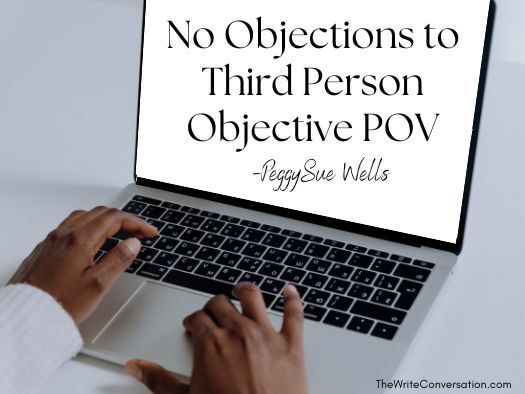
by PeggySue Wells @PeggySueWells
In Third Person Objective POV, the author narrates what happens without sharing the character’s thoughts or feelings.
This perspective is characterized by the pronouns He, She, and They.
In stories told in Third Person Objective POV, the narrator is a neutral entity, relying on observations of characters rather than seeing from the character's head. The tale is told as if the author is a fly on the wall, a mouse in the corner, or a non-participating person in the background who is free to observe.
Hemingway and Fitzgerald
Ernest Hemingway was a master of third-person objective POV. Because the narrator is not talking about himself, there is no “I” in the writing. The reader has access to the behavior of each character’s equally. The tale is told through a purely observational manner. In his short story, Hills Like White Elephants, Hemingway writes this scene.
Hills Like White Elephants excerpt
The American and the girl with him sat at a table in the shade, outside the building. It was very hot and the express from Barcelona would come in forty minutes. It stopped at this junction for two minutes and went on to Madrid.
"What should we drink?" the girl asked. She had taken off her hat and put it on the table.
"It’s pretty hot," the man said.
"Let’s drink beer."
"Dos cervezas," the man said into the curtain.
"Big ones?" a woman asked from the doorway.
"Yes. Two big ones.”
Similarly Fitzgerald
Similarly, F. Scott Fitzgerald wrote The Great Gatsby in the Third Person Objective POV. Fitzgerald’s narrator, the “I” in the example below, is a man named Nick.
Though the central character of the book is Gatsby, the reader learns Gatsby’s story through the personal perspective of a nearby narrator.
Great Gatsby excerpt
When I came back from the East last autumn I felt that I wanted the world to be in uniform and at a sort of moral attention forever; I wanted no more riotous excursions with privileged glimpses into the human heart. Only Gatsby, the man who gives his name to this book, was exempt from my reaction—Gatsby, who represented everything for which I have an unaffected scorn.
Third Person Objective Titles
Other books penned in the Third Person Objective POV include Maltese Falcon by Dashiell Hammett All the Light We Cannot See by Anthony Doerr Pride and Prejudice by Jane Austen The Memory Keeper’s Daughter by Kim Edwards
The advantage of writing in Third Person Objective POV include flexibility for the narrator who can move between the story's characters, employing close third person, limited, and omniscient points of view according to which one best serves the telling of the story in the most suspenseful angle.
Additionally, because the narrator is above the action, the Third Person Objective POV gives the storyteller an authoritative voice. With access to multiple angles, the storyteller has a 360-degree view of the story to weave a complex narrative that keeps the reader turning pages.
TWEETABLENo Objections to Third Person Objective POV from @PeggySueWells on @EdieMelson (Click to Tweet)
 PeggySue Wells is the award-winning USA Today and Wall Street Journal bestselling author of 45 books including the mystery suspense title of the year, Unnatural Cause.
PeggySue Wells is the award-winning USA Today and Wall Street Journal bestselling author of 45 books including the mystery suspense title of the year, Unnatural Cause. Action and adventure, romantic suspense, military romance, and cozy mystery are the page-turning novels by P.S. Wells including Chasing Sunrise, Homeless for the Holidays, and The Patent. How to live better, easier, and simpler is the focus of her nonfiction including The Ten Best Decisions A Single Mom Can Make.
PeggySue is a frequent guest with media including Focus On The Family, Family Life Today, and Christian Product Expo. She regularly teaches at conferences including Write To Publish, Taylor University Writers Conference, Kentucky Christian Writers Conference, and the Advanced Writers and Speakers Association. Collaborator on multiple titles including books with Dr. Benjamin Hardy, Shemane Nugent, Pat Palau, and Pam Farrel, PeggySue is a writing coach. When not writing, she parasails, skydives, snorkels, scuba dives, rides horses, and has taken (but not passed) pilot training. Founder of SingleMomCircle.com, connect with PS Wells at WWW.PEGGYSUEWELLS.COM, on Facebook at PeggySue Wells, and LinkedIn at LINKEDIN.COM/IN/PEGGYSUEWELLS
Published on March 31, 2025 22:00
March 30, 2025
Writing Myths, Myth-stakes, Myth-conceptions, and Poor Advice
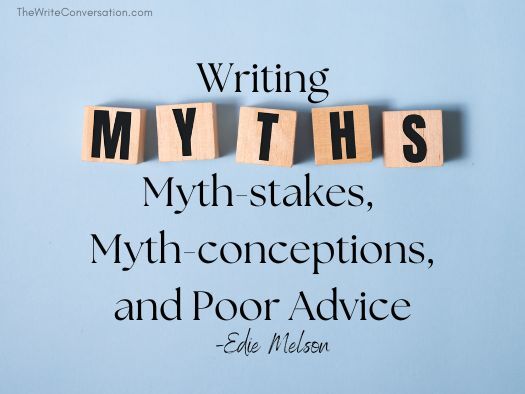
by Edie Melson @EdieMelson
I’ve been in the industry a while . . . long enough to hear some pretty remarkable myth-statements. Today I’m tackling some of the various writing myths and outright mistakes, hopefully with a touch of punny humor.
A Few Nonexistent Categories
True Novel (or True Fiction): I hear this one more than you might imagine, and it always makes me cringe. A novel is—by definition—a work of fiction. If it’s true, it’s either a type of memoir or biography or autobiography. A novel can be based on true events, but it’s not true.
Fiction Novel: This is another cringe-worthy appellation. Again, a novel is fiction. This is like saying it’s a book book. They’re exactly the same thing.
Fictional Nonfiction: This is a crazy one. It’s either fiction or nonfiction. No book can be both.
Autobiographical Memoir: Yeah, no.
Personal Self-Help: Aren’t all self-help guides personal?
Myth-stakes and Outright Poor Writing Advice
Real writers don’t have to do rewrites. I’ve never spoken to a writer who didn’t need to do rewriters. I’ve heard rumors, but I suspect I’m more likely to get an in-focus picture of a Sasquatch than meet one of those elusive novelists.
Write dialogue like you talk. We all want the dialogue we write to read like a real conversation. But the smart writer knows that means taking the boring parts out. Listen to a real conversation or better yet, record one. Then write it out. You’ll see how truly awful it is.
Don’t begin to build a platform until you have a contract. This is the worst advice I’ve ever heard, and there are two major reasons. First, if you wait until you have a contract to build your platform, you’ll probably have a hard time getting said platform. Second, you will be way behind. It takes a good year to a year-and-a-half to build a viable platform.
Only write when you’re inspired. This is the way most of us begin our writing journey—inspired. However, only writing when we feel like it isn’t a sustainable model for publishing. We must write when it’s hard, when we are notinspired, and when life gets in the way.
Always use synonyms for the word said. This is outdated advice. In the days of Louis L’Amour and Zane Grey, you’ll see everything except the word said in dialogue. Words like prevaricated, expostulated, responded, etc. were the accepted way to tag dialogue. But no more. Readers today (and since the late 80s) prefer the word said, when tags are used in dialogue. It’s a word that disappears and doesn’t interrupt the fictional dream.
Look for places to use big words and expand your reader’s vocabulary. Yeah, not so much. If today’s reader has to stop and look up too many words, we’ll lose them. Also, using a lot of big words is perceived as showing off how smart we are as opposed to those reading our work.
Every writer must write from an outline. NOT true. There are as many different processes for writing as there are writers. Some people are known as plotters—or those who prefer to outline their story before writing. Others, referred to as pantsers or intuitive writers, like to discover the story as they write. The best way to do it? The way that works for you.
Write what you know. On the surface, this may sound like savvy advice. It’s not. With the advent of the Internet, we can do the research and find out almost anything. We're no longer limited to our own personal experience. The better version of this is “write what you want to know.”
Real writers write every day. Again, it sounds good. Surely someone who’s serious about something will do it every day. Truthfully, we all work better when we take time to relax and let our minds rest (Sabbath rest, anyone). And not every successful writer has a schedule that allows for writing every day. I prefer to encourage people to write regularly, making time to write a priority.
Pay attention to trends and write to that. There are a surprising number of writers who do this and it’s rarely successful. Trends tend to be crazy popular for a short time, then gone for a long time. Beyond that, writing a book and bringing it to publication takes time. This is true whether the book is traditionally or self-published. Chances are, by the time you write the book, have it edited, find a publisher, or even find the cover design and format the interior (if you’re self-publishing) the trend is on the wane.
All self-publishing is vanity. There was a time—in the earlier part of my career—when this was the agreed upon belief. This is NOT true. Self-publishing, done with excellence, is often an excellent option. Where self-publishing becomes a problem is when we use it as a short cut. There are no good short-cuts in publishing.
Editing will destroy my voice. This one is just sad. Good editors make our words soar. They help us take our voice to the next level. Occasionally we come across an editor who tries to turn their clients’ words into their own words. In that case, run the other way. And just FYI, get references from people you trust before hiring a freelance editor.
Write dialogue like you talk. We all want the dialogue we write to read like a real conversation. But the smart writer knows that means taking the boring parts out. Listen to a real conversation or better yet, record one. Then write it out. You’ll see how truly awful it is.
Never use the verb was, it’s passive. Sometimes the word was is passive, sometimes is just past tense. How to tell? The quickest way is to see if it’s helping another verb, like, She was sleeping. That’s almost always passive. A better option would be, She slept.
Never begin a new project until the current one is finished. Not true. Often book writers have several projects going at once—at different stages. For example:Book A is finished and waiting to launchBook B is in draft mode, with the author working on getting it ready to send to the publisherBook C is in brainstorming mode, with the author figuring out what exactly the book will be about. Article 1 is being written to promote Book A.
What we want to avoid is always starting projects and never finishing anything.
And, for the Christian publishing author there’s this mythstake…
God gave me these words and told me you would publish them. OUCH! This is an actual cliché at the writing conferences I attend. Every editor, agent, and publisher has heard them and the truly make us cringe.
Bottom LineAs you may have noticed, the first clue the advice you’re hearing is suspect are the use of the words ALWAYS and/or NEVER. Those two absolutes are words that should make you cringe and assume what you’re hearing is incorrect.
Now it’s your turn, what are some non-existent genres and some of the worst writing advice you’ve ever heard? Be sure to leave your thoughts in the comments section below.
Don’t forget to join the conversation!Blessings, Edie
TWEETABLEWriting Myths, Myth-stakes, Myth-conceptions, and Poor Advice from @EdieMelson (Click to Tweet)
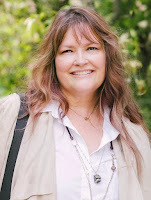 Edie Melson is a woman of faith with ink-stained fingers observing life through the lens of her camera. She’s a writer who feels lost without her camera and a card-carrying introvert who loves to encourage an audience. She also embraces the ultimate contradiction of being an organized creative. As a popular speaker, she’s encouraged and challenged audiences across the country and around the world. Her numerous books, including the award-winning Soul Care series reflect her passion to help others develop the strength of their God-given gifts and apply them to their lives.
Edie Melson is a woman of faith with ink-stained fingers observing life through the lens of her camera. She’s a writer who feels lost without her camera and a card-carrying introvert who loves to encourage an audience. She also embraces the ultimate contradiction of being an organized creative. As a popular speaker, she’s encouraged and challenged audiences across the country and around the world. Her numerous books, including the award-winning Soul Care series reflect her passion to help others develop the strength of their God-given gifts and apply them to their lives.She and husband Kirk have been married 43+ years, and live near their three sons and three grandchildren in the foothills of the Blue Ridge Mountains. Edie and Kirk can often be found with their big black dog hiking—Edie hanging off ledges for the best camera angle and Kirk patiently carrying her tripod. Connect with her on her website, WWW.EDIEMELSON.COM and through social media.
Published on March 30, 2025 22:00
March 29, 2025
The Whys and Hows of Creating a Writer's Mission Statement
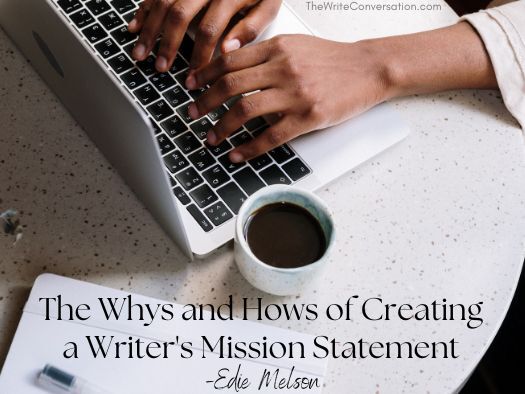
by Edie Melson @EdieMelson
Life is getting busier for all of us. And every writer I know is overwhelmed with the to-do list they’re facing and, beyond that, the opportunities to go many different directions.
So how do we decide what to do first and which writing opportunities to pursue?
The best answer is, “We follow God’s leading.”
And while I agree one-hundred-percent with that answer. I also know that sometimes it’s hard to figure out which priority is God’s leading and which one isn’t.
So let’s go a little deeper and look at what following God’s leading looks like when we live it out.
Why Develop an Author Mission Statement
Developing an author (or writing) mission statement is one of the smartest things I’ve ever done to facilitate being certain about what God is saying. My mission statement has allowed me to boil down—through prayer and seeking God’s presence—what His specific calling is for my life. And now that I have this statement, it has acted as a filter. My author mission statement gives me a way to evaluate everything that comes my way—from opportunities to offer counsel to projects to work on.
As I’ve said over and over on this blog, each of us is a unique creation. God has a plan and a purpose for our lives—and our writing. While it’s important to grow and explore, we flourish best from a foundation of being who God planned us to be. Today I’m going to share my own process of how to write an author mission statement.
Crafting an author mission statement isn’t usually a quick project. But it’s vital that each writer has one. It will help us evaluate opportunities and give us confidence to move forward because we know who we are.
The Process of Writing an Author Mission Statement
In your journal or notebook, begin the process by answering each question below in a single sentence.What do you do? Yes, you write. But go deeper than that. Who do you do it for? What makes you unique?What is the God-sized part of your calling? (Make it big—only God can attain it)What can your readers expect?
Play with the statements you’ve written. Some of them may meld together into a single sentence. After you’ve got an idea of where you’re headed, add an “I believe” statement to the beginning.
Here is my author mission statement:
I believe God has a purpose for everyone’s unique story. I encourage others to live that story by telling stories of my own—through words and pictures. I’m a writer who feels lost without her camera and a card-carrying introvert who loves to encourage an audience. All my books point to the transformational possibilities inside each of us when we tap into our God-given strengths.
This statement helps me evaluate opportunities, stay on track with my purpose, and lean into God as I become more of who He designed me to be.
There is also an excellent blog post from Cindy Sproles on Tips to Develop Your Own Writing Mission Statement. I recommend you also look at that for ideas.
Finally, do you have an author (writing) mission statement? If so, how has it helped. If not, what is holding you back? Be sure to share your thoughts in the comments section below.
Don’t forget to join the conversation!Blessings, Edie
TWEETABLEThe Whys and Hows of Creating a Writer's Mission Statement from @EdieMelson (Click to Tweet)
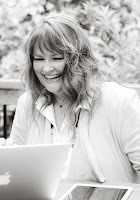 Edie Melson is a woman of faith with ink-stained fingers observing life through the lens of her camera. No matter whether she’s talking to writers, entrepreneurs, or readers, her first advice is always “Find your voice, live your story.” As an author, blogger, and speaker she’s encouraged and challenged audiences across the country and around the world. Her numerous books reflect her passion to help others develop the strength of their God-given gifts and apply them to their lives.Connect with her on her website, through Facebook, Twitter and on Instagram.
Edie Melson is a woman of faith with ink-stained fingers observing life through the lens of her camera. No matter whether she’s talking to writers, entrepreneurs, or readers, her first advice is always “Find your voice, live your story.” As an author, blogger, and speaker she’s encouraged and challenged audiences across the country and around the world. Her numerous books reflect her passion to help others develop the strength of their God-given gifts and apply them to their lives.Connect with her on her website, through Facebook, Twitter and on Instagram.
Published on March 29, 2025 22:00
March 28, 2025
April Writing Idea Starters for Blogging, Social Media, and Articles
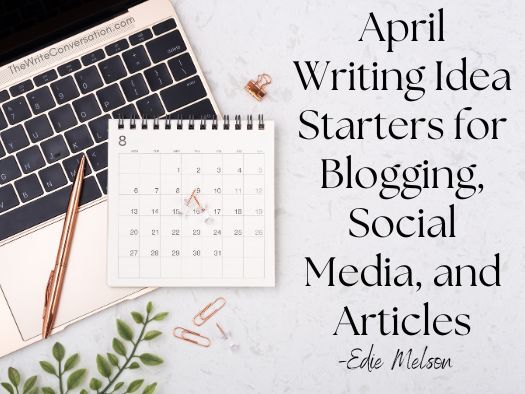
by Edie Melson @EdieMelson
The calendar is a great place to start when we’re looking for writing ideas. Crazy (and even legit) holidays are great conversation starters for social media sites, articles, and blogging. This month is especially fun for writers because of all the writing/reading related holidays. How many can you fine? Be sure to leave your thoughts in the comment section at the end of the post.
April contains these special weeks:National Window Safety Week (first full week in April)International Pooper Scooper Week (first full week in April)National Wildlife Week (April 5 – 9)National Integrated Respiratory Care Week (week of April 7)National Library Week (April 6 – 12)National Student Employment Week (second full week in April)Animal Control Appreciation Week (second full week in April)Pan American Week (week of April 14)National Pet ID Week (Begins April 17)National Coin Week (third week in April)Neurodiagnostic Week (third week in April)Gathering of Nations (fourth weekend in April)Preservation Week (last week in April)National Infant Immunization Week (last week in April)Every Kid Healthy Week (last week in April)Administrative Professionals Week (last full week in April)Sky Awareness Week (last full week in April)National Princess Week (last full week in April)Medical Laboratory Professionals Week (last full week in April)National Volunteer Week (April 20 – 26)
April is the Month of:National Pickleball MonthNational Afternoon Tea MonthEsophageal Cancer Awareness MonthNational Brunch MonthNational Financial Literacy MonthNational Alcohol Awareness MonthParkinson’s Awareness MonthEnglish Language MonthNational Month of HopeNational Volunteer MonthNational Distracted Driving Awareness MonthCanine Fitness MonthNational Landscape Architecture MonthOccupational therapy MonthNational Internship Awareness MonthNational Month of the Military ChildNational Donate Life Awareness MonthNational Child Abuse Awareness MonthNational Safe Digging MonthNational Welding MonthNational Poetry MonthNational Pecan MonthNational Straw Hat MonthNational Jazz Appreciation MonthNational Soft Pretzel MonthNational Humor MonthNational Garden MonthNational Fresh Celery MonthNational Decorating MonthScottish American Heritage MonthNational Couple Appreciation MonthSexual Assault Awareness MonthStress Awareness MonthRecords & Information Management MonthKeep America Beautiful MonthNational Autism Awareness MonthLawn & Garden MonthInternational Guitar Month
April Daily Celebrations:
April 1National One Cent DayNational Sourdough Bread DayApril Fools’ DayReading is Funny DayInternational Tatting Day
April 2National DIY DayNational Ferret DayNational Walking DayNational Peanut & Jelly DayNational Reconciliation DayWorld Autism Day
April 3National Film Score DayNational Burrito DayNational Find a Rainbow DayNational Chocolate Mousse DayNational Tweed DayWorld Party Day
April 4National Vitamin C DayJeep 4x4 DayNational Chicken Cordon Bleu DayNational School Librarian DayNational Hug a Newsman DayNational Walk Around Things DayInternational Carrot DayTell a Lie DayWalk to Work Day
April 5Star Trek First Contact DayNational Gold Star Spouses DayNational Flash Drive DayNational Deep Dish Pizza DayNational Nebraska DayNational Love Our Children Day (First Saturday in April)National Read a Road Map DayNational Raisin and Spice Bar DayNational Caramel DayNational Handmade Day (First Saturday in April)World Corporate Health DayInternational Pillow Fight DayRead a Road Map Day
April 6National Carbonara Day National Tartan DayNational Teflon DayNational Student-Athlete DayNational Caramel Popcorn DayNational Sorry Charlie DayGeologists Day
April 7National IEP Writing Day (First Monday in April)National Girl Me Too DayNational No Housework DayNational Coffee Cake DayNational Beer DayWorld Health Day
April 8National Library Workers DayNational Empanada DayNational Zoo Lovers DayNational All is Ours DayBe Kind to Lawyers Day
April 9National Unicorn DayNational Library Outreach DayNational Former Prisoner of War Recognition DayNational Education and Sharing DayNational Chinese Almond Cookie DayNational Winston Churchill DayNational Name Yourself DayNational Cherish an Antique Day
April 10National Erase Self-Negativity DayNational Farm Animals DayNational Alcohol Screening DayNational Cinnamon Crescent Roll DayNational Siblings DayNational Encourage a Young Writer DayNational Support Teen Literature Day
April 11National Submarine DayNational Day of SilenceNational Cheese Fondue DayNational Pet DayNational Eight Track Tape DayNational Barbershop quartet Day
April 12National Only Child DayNational for Twelves DayNational Colorado DayNational Grilled Cheese Sandwich DayNational Licorice DayNational Big Wind Day
April 13National Make Lunch Count DayNational Peach cobbler DayNational Thomas Jefferson DayNational Scrabble Day
April 14National Dolphin DayNational Gardening DayLook up at the Sky DayNational Pecan DayNational Ex Spouse DayNational Pan American DayNational Reach as High as You Can DayInternational Moment of Laughter Day
April 15National Laundry DayPurple Up! DayNational Glazed Spiral Ham DayNational Titanic Remembrance DayNational Rubber Eraser DayNational Take a Wild Guess DayNational Tax DayEggs Benedict Day
April 16National Pathway DayNational Banana DayNational Bean Counter DayNational Orchid DayNational Healthcare Decisions DayNational Wear Your Pajamas to Work DayNational Eggs Benedict DayWear Pajamas to Work Day
April 17National Get to Know Your Customers DayNational Crawfish DayNational High Five DayNational Cheeseball DayNational Haiku Poetry DayNational Ellis Island Family History DayNational Bat Appreciation Day
April 18National Exercise DayGood FridayClean Out Your Medicine Cabinet DayNational Animal Crackers DayNational Poem in Your Pocket DayNational Columnist DayNational Lineman Appreciation Day
April 19National North Dakota DayNational Auctioneers DayNational Garlic DayNational Oklahoma City Bombing Commemoration DayNational Hanging out Day
April 20EasterVolunteer Recognition DayNational Cheddar Fries DayNational Pineapple Upside Down Cake DayNational Lima Bean Respect DayNational Look Alike Day
April 21National Yellow Bat DayNational Chocolate Covered Cashews DayNational Kindergarten Day
April 22Bus Driver Appreciation DayNational Jelly Bean DayNational Girl Scout Leader DayNational Earth Day
April 23National Lost Dog Awareness DayNational Administrative Professionals DayNational Cherry Cheesecake DayNational Take a Chance DayNational Picnic DayNational Talk Like Shakespeare DayImpossible Astronaut DayWorld Book Night
April 24National Teach Children to Save DayNational Take Our Daughters and Sons to Work DayNational Pigs in a Blanket Day
April 25National Historic Marker DayNational Hug a Plumber DayNational Hairball Awareness DayNational DNA DayNational Arbor DayNational Zucchini Bread DayNational Telephone DayEast Meets West Day
April 26Celebrate Trails DayNational First Ladies DayIndependent Bookstore DayNational South Dakota DayNational Dissertation DayNational Pool Opening DayNational Kiss of Hope DayNational Help a Horse DayNational Sense of Smell dayNational Rebuilding DayNational Pretzel DayNational Kids and Pets DayNational Richter Scale Day
April 27National Gummi Bear DayNational Devil Dog DayNational Pet Parents DayNational Prime Rib DayNational Tell a Story DayNational Babe Ruth DayWorld Pinhole Photography Day
April 28Global Pay It Forward DayNational Superhero DayNational BraveHearts DayNational Blueberry Pie DayNational Great Poetry Reading Day
April 29National Zipper DayNational Shrimp Scampi DayNational Peace Rose DayNational Bubble Tea DayStop Food Waste DayWorld Wish Day
April 30National Bubble Tea DayNational PrepareAthon DayNational Military Brats DayNational Adopt a Shelter Pet DayNational Raisin DayNational Oatmeal Cookie DayNational Hairstylist Appreciation DayNational Bugs Bunny DayNational Honesty Day
How many writing/reading related holidays did you find? Which one was your favorite? Be sure to leave your thoughts in the comments section below.
Don't forget to join the conversation!Blessings,Edie
TWEETABLEApril Writing Idea Starters for Blogging, Social Media, and Articles from @EdieMelson (Click to Tweet)
 Edie Melson is a woman of faith with ink-stained fingers observing life through the lens of her camera. She’s a writer who feels lost without her camera and a card-carrying introvert who loves to encourage an audience. She also embraces the ultimate contradiction of being an organized creative. As a popular speaker, she’s encouraged and challenged audiences across the country and around the world. Her numerous books, including the award-winning Soul Care series reflect her passion to help others develop the strength of their God-given gifts and apply them to their lives.
Edie Melson is a woman of faith with ink-stained fingers observing life through the lens of her camera. She’s a writer who feels lost without her camera and a card-carrying introvert who loves to encourage an audience. She also embraces the ultimate contradiction of being an organized creative. As a popular speaker, she’s encouraged and challenged audiences across the country and around the world. Her numerous books, including the award-winning Soul Care series reflect her passion to help others develop the strength of their God-given gifts and apply them to their lives.She and husband Kirk have been married 43+ years, and live near their three sons and three grandchildren in the foothills of the Blue Ridge Mountains. Edie and Kirk can often be found with their big black dog hiking—Edie hanging off ledges for the best camera angle and Kirk patiently carrying her tripod. Connect with her on her website, WWW.EDIEMELSON.COM and through social media.
Published on March 28, 2025 22:00
March 27, 2025
Sell More Books with These 5 Simple Book Table Elements

by Lori Hatcher
As speaker/writers, we have a fabulous opportunity to supplement our writing income by selling books at speaking engagements. With a few strategic elements, you can create a book table that’s both beautiful and lucrative.
5 Elements of an Effective (and lucrative) Book Table
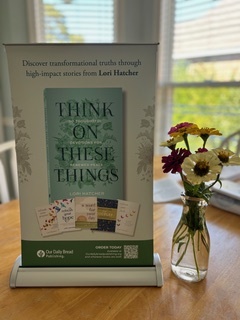 1. A Tabletop Retractable Banner
1. A Tabletop Retractable BannerThese little gems measure about 18 inches tall and retract into a 12-inch stand. I ordered mine from Vistaprint, but you can order them from most office supply stores. When you’re ready to set up your table, pull the vinyl banner out of the stand, attach the support bar, and voila! You have a colorful, eye-catching advertisement for your book or ministry. When you’re done, the banner rolls back up into its little base for easy storage.
I confess, I was so excited when my first book released that I ordered a floor-sized banner that stood more than six feet tall. I still use it for book fairs and vendors halls, where there’s lots of space and lots of people competing for attention, but it’s a bit of an overkill for a back-of the-room event. Not to mention expensive. Tabletop banners cost about $30. The big guys? About four times that amount.
What should you put on your banner? If this is your first, book, simply upload a high-resolution picture of your book cover. If you have multiple books, consider a collage of the covers or a collage of a book series. Or you could put your headshot and your name or the name of your ministry/business. For my latest book, my publisher put a large picture of Think on These Things and included small cover shots of my other books at the bottom. Consider including a QR code that leads to your publisher’s book page or your Amazon author page.
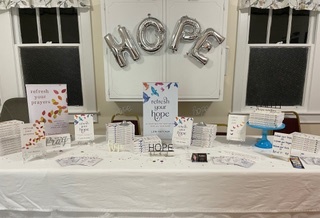 2. Easel Book stands
2. Easel Book standsThe lowly book stand is perhaps the least-expensive yet most-important element of a successful book table. It allows you to display the pretty face of your book for all to see and comes in a variety of shapes, sizes, and styles. My favorite is a simple acrylic book stand I bought at Walmart. Online they sell a set of six for less than seven dollars. They’re lightweight, and because they fold, they’re easy to store and transport.
3. Height
Think about the display tables in your favorite book store. Seldom will you see books laid out flat on the table. Instead, you see an eye-catching, visually appealing display. One of my writer friends stands a small wooden crate on its side and slides the books in, spine out to display the titles. She decorates the top of the crate with items that fit the theme of the book and tucks some artificial flowers around the edges.
Another friend staggers a few empty boxes of various heights, throws a tablecloth over them, and arranges her books on stands on top. A friend who worked for a major bookstore chain taught me to stack four or five books, then place a copy of the same book on a stand on top of the stack.
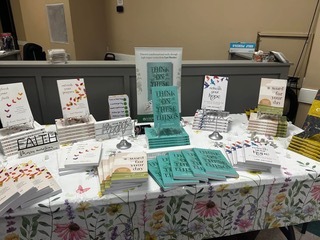 4. A Tablecloth
4. A TableclothWhile some venues prefer you use the tablecloth they provide that matches their décor, others expect you to bring your own. I recommend investing in a no-wrinkle tablecloth that fits a 6-foot rectangular table. You can choose a color that fits your theme or use a black or white cloth with a table runner in a pop color.
I think black showcases the colorful titles of most books well, so I invested in a 6-foot stretch black spandex variety. The ends tuck under the table legs and the fabric goes all the way to the floor, creating a storage space under the table to hide the boxes and other paraphernalia I bring with me. I found a set of two tablecloths on Amazon for less than fifteen dollars.
Fairy Lights
Okay, these aren’t a necessity, and maybe they don’t entice readers to buy more books, but they sure are fun. I found a 10-foot string of crackle ball fairy lights on Amazon and wove them in and out among the books on my table. They’re battery operated and have eight modes to choose from. I think it’s best to avoid the strobe setting (you don’t want to give someone a migraine), but I really like the soft blinking mode or the chasing mode. The lights are eye-catching and add just the right pop.
The pictures in the post above are those someone took of my table at a recent women’s ministry event to give you an idea of some of the elements I’ve shared here. (Yes, the event had a theme, so I used the tablecloth they supplied.) You’ll notice decorative items that support the themes of my books, a business card holder to share my contact information, and a stand-up price list for easy shopping.
The possibilities for an effective book table are endless, but a few simple elements can take your book table from meh to marvelous (and lucrative). I’d love to hear what you place on your book table. Leave a comment below and join the conversation.
TWEETABLESell More Books with These 5 Simple Book Table Elements from Lori Hatcher on @EdieMelson (Click to Tweet)
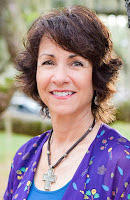 Lori Hatcher is a freelance editor, writing instructor, and author of six devotionals with Our Daily Bread Publishing. Her latest book,
Think on These Things: 60 Thoughtful Devotions for Renewed Peace
, released this month. Lori writes for Revive Our Hearts, Focus on the Family, The Upper Room, and Crosswalk.com. A frequent instructor at writers conferences around the country, Lori loves nothing better than helping other writers polish and perfect their craft. Connect with her at www.LoriHatcher.com.
Lori Hatcher is a freelance editor, writing instructor, and author of six devotionals with Our Daily Bread Publishing. Her latest book,
Think on These Things: 60 Thoughtful Devotions for Renewed Peace
, released this month. Lori writes for Revive Our Hearts, Focus on the Family, The Upper Room, and Crosswalk.com. A frequent instructor at writers conferences around the country, Lori loves nothing better than helping other writers polish and perfect their craft. Connect with her at www.LoriHatcher.com.
Published on March 27, 2025 22:00



